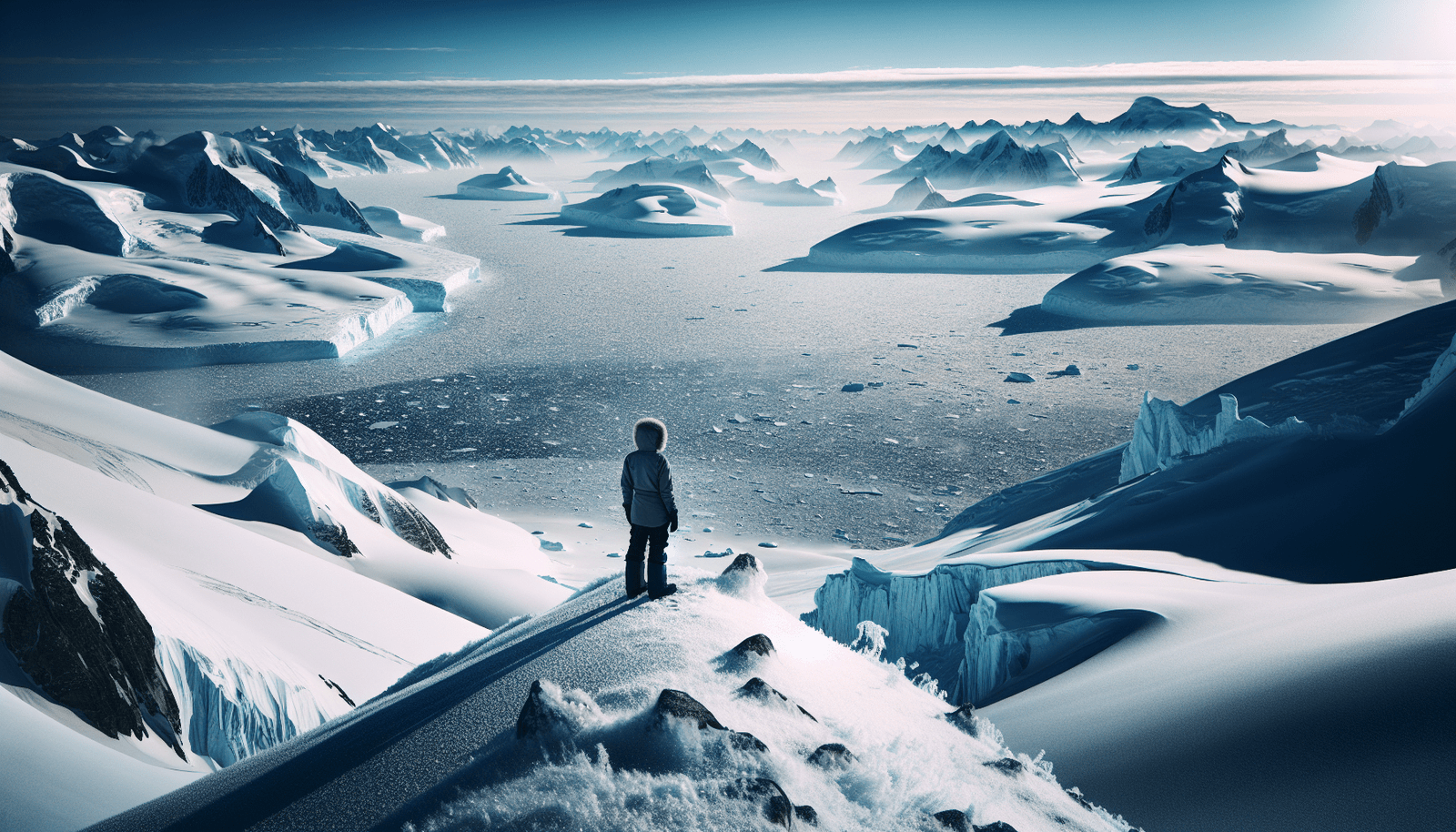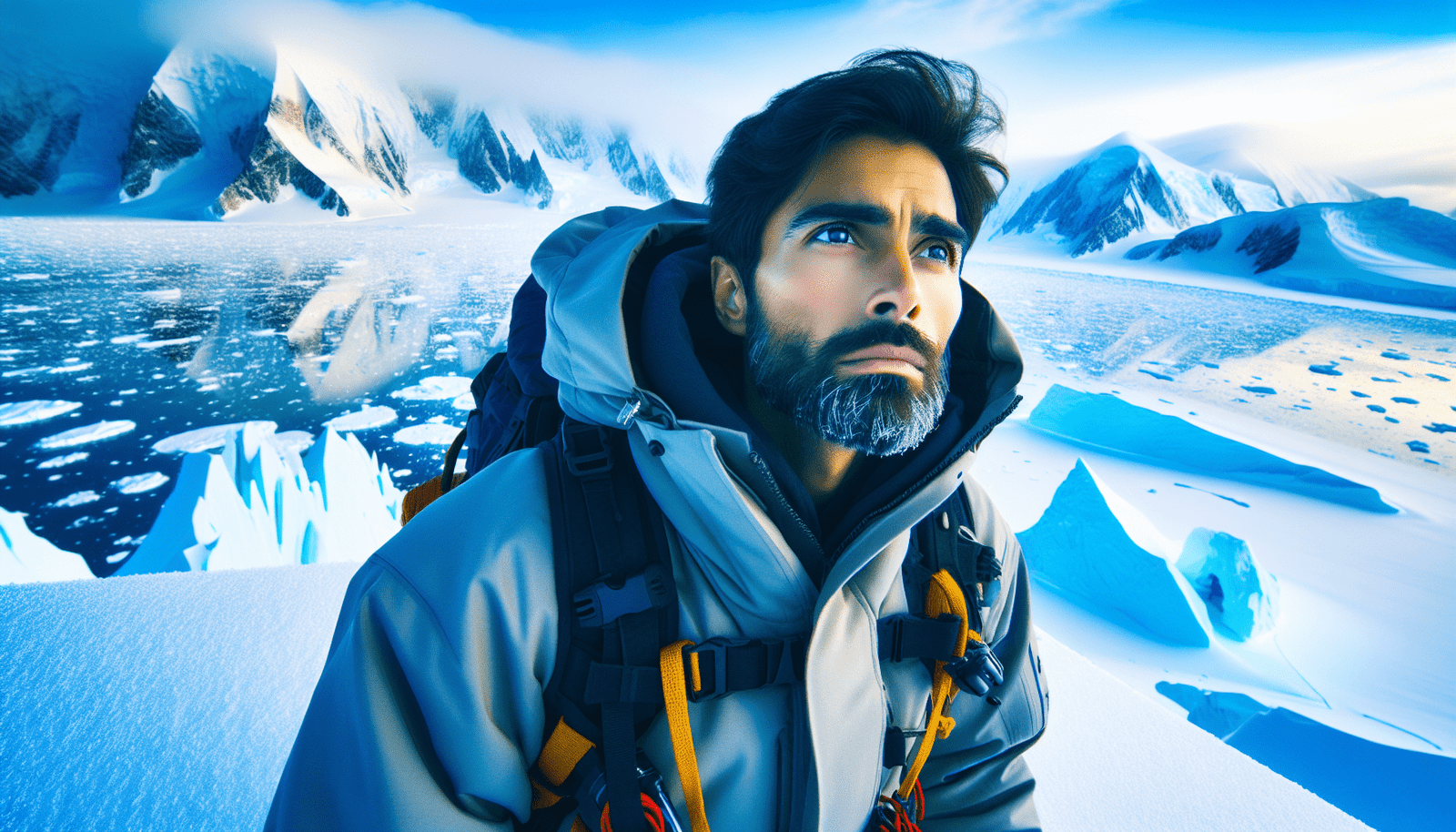Polar Expeditions
Imagine yourself daringly navigating the icy landscape of the Arctic or Antartica, bundled up against the bone-chilling cold, and mesmerized by the pristine, untouched beauty surrounding you. That’s the thrilling world of polar expeditions. This article unveils the raw exquisiteness and unvarnished reality of these excursions, from the historical journeys of early explorers to the modern-day adventurers’ experiences. You will be taken into the heart of the most extreme conditions on earth, helping to shed light on the challenges, wonders and scientific value of venturing into these magnificent but forbidding terrains.

The History of Polar Expeditions
You’re about to venture on a journey that’ll take you through the ever-fascinating history of polar expeditions. These hazardous yet fulfilling journeys to the ends of the earth have been carried out by curious and courageous explorers for centuries, resulting in some of the most heroic tales of survival and discovery.
Exploration of the Arctic and the Antarctic in the 1800s
During the 19th century, driven by the allure of unexplored territory and scientific curiosity, several expeditions were launched towards both the Arctic and the Antarctic regions. Key among these were the British expeditions led by John Barrow who had a keen interest in finding the Northwest Passage. The American explorer, Elisha Kent Kane, made significant strides towards Arctic exploration making it as far north as 82°29′ in his expeditions. In the Antarctic, the 1840s saw a three-pronged approach from the French, led by Jules Dumont d’Urville; the Americans, led by Charles Wilkes; and the British, led by James Clark Ross, all pushing further south than ever before.
Significant expeditions in the 20th century
The turn of the century brought with it numerous pivotal polar expeditions. Robert Peary, an American explorer, and his team made a controversial claim to have reached the North Pole in 1909, though there remains much debate about whether they truly succeeded. The first undisputed trek to the South Pole was achieved in 1911 by the Norwegian expedition led by Roald Amundsen, while British explorer Robert Falcon Scott’s tragic party reached the pole a month later only to perish during their return journey.
Modern-day Polar expeditions
Today, polar expeditions continue to push the boundaries of human endurance and scientific exploration. Modern explorers, armed with advanced technology and a deep understanding of the impact of climate change on these fragile ecosystems, are embarking on journeys to monitor environmental changes, collect data, and uncover the mysteries of the polar world.
Notable Polar Explorers
Roald Amundsen
Roald Amundsen, the famed Norwegian explorer, was the first person to reach both the North and South Poles. Known for his meticulous planning, Amundsen’s South Pole expedition in 1911 is widely regarded as a masterclass in polar exploration.
Robert Falcon Scott
British Royal Navy officer Robert Falcon Scott led two notable expeditions to the Antarctic regions: the Discovery and the Terra Nova. His unfortunate last expedition during which he and his comrades perished after reaching the South Pole has been immortalised in history.
Ernest Shackleton
Ernest Shackleton, another prominent British explorer, is best known for his Endurance expedition. When his ship became trapped and was eventually crushed by ice, his leadership during the subsequent survival ordeal marked one of the greatest rescue journeys in history.
Fridtjof Nansen
Norwegian explorer Fridtjof Nansen’s remarkable utilisation of scientific methods brought a new approach to polar exploration. Best known for his attempt to reach the North Pole in the Fram, his efforts significantly contributed to our understanding of oceanic and atmospheric conditions.
Challenges Faced in Polar Expeditions
Climate and weather difficulties
Explorers on polar expeditions face formidable challenges, not least the brutal and unpredictable weather. Temperatures often drop far below freezing, making every task, from setting up camp to conducting research, a monumental challenge. Harsh winds, blizzards, and sudden storms can all but halt progress and jeopardize safety.
Physical and mental health challenges
The physical demands of a polar expedition are intense and can lead to a range of health issues, including frostbite, snow blindness, and hypothermia. Equally challenging are the psychological strains. The isolation, the monotony, and the constant stress put even the most resilient minds to the test.
Equipment and supply issues
Successful expeditions hinge on having the right equipment and ample supplies—issues with either can escalate to life-threatening situations rapidly. From sturdy, lightweight tents to dry, high-nutrition meals, every single gear selection can be paramount to survival.

Key Achievements from Polar Expeditions
First successful journey to North Pole
The first successful journey to the North Pole is a subject of ongoing debate. American explorer Robert Peary claimed to have reached the Pole in 1909, but concerns about his journey’s speed and navigation make Roald Amundsen’s 1926 expedition aboard the airship Norge a more widely accepted contender.
First successful journey to South Pole
The South Pole was first reached by Roald Amundsen and his team in December 1911. Despite harsh conditions and the challenge of high altitude, they managed to beat the British team by just over a month, making it one of the most famous races in exploration history.
Scientific discoveries from expeditions
Every polar expedition has contributed to our knowledge of these extreme environments. From understanding the effects of extreme cold on human performance to mapping uncharted territories and studying unique wildlife, these journeys have significantly expanded our knowledge of the planet.
Scientific Discoveries and Contributions
Climate and environmental impact studies
Polar expeditions have played a vital role in our understanding of global climate change. They have provided crucial data on rising temperatures, melting ice caps, and their wider implications for global ecosystems.
Discovery of new species
The inhospitable polar regions are home to an array of unique species. Every expedition brings chances of new discoveries, enriching our understanding of life’s resilience and adaptability.
Understanding of polar ice caps
Rigorous scientific studies during polar expeditions have deepened our understanding of polar ice caps, their formation, movement, and the role they play in global climate systems.
Impact of Polar Expeditions on International Relations
Negotiation for territory claims
Historically, polar exploration has led to challenging negotiations over territory claims. As nations raced to plant flags, conflicts over sovereignty became inevitable. International treaties have since been put in place to govern such claims and ensure peaceful scientific collaboration.
Cooperation in scientific research
Despite the competition, polar exploration has also led to unexpected cooperation in research. The harshness of the environment necessitates collaboration and sharing of resources, leading to bonds forged amidst ice and snow.
Tensions and conflicts arising from expeditions
While there were alliances, tensions and conflicts were also inevitable, particularly during the early days of polar exploration. Rivalries between nations often heightened tensions, underscoring the political nature of these quests for new frontiers.
Women in Polar Expeditions
First women in Antarctic and Arctic exploration
The first woman to set foot on Antarctica was Caroline Mikkelsen in 1935. Since then, women have made significant strides in polar exploration. In 1978, Arlene Blum led the first American Women’s Himalayan Expedition to Annapurna, a milestone that heralded a new era for women in extreme exploration.
Challenges and achievements of women in polar expeditions
Despite making great strides, women in polar exploration have faced and continue to face considerable challenges. From battling age-old stereotypes to the physical difficulties of extreme environments, these women have proved their mettle time and again.
Women’s contributions to Polar research
From conducting groundbreaking research to leading expeditions, women’s contributions to polar research have been invaluable. They have not only broken barriers but also enriched our understanding of these remote landscapes.
Animal and Plant Life in Polar Regions
Adaptations of flora and fauna to extreme weather conditions
The polar regions house an astounding array of wildlife, each species remarkably adapted to survive severe conditions. From penguins and polar bears to hardy plant species like lichens and mosses, their resilience is a testament to nature’s adaptability.
Impact of climate change on polar wildlife
Climate change has substantial impacts on polar wildlife. Rising temperatures, shrinking ice caps, and changing sea levels all pose significant threats to polar ecosystems, making it increasingly imperative to monitor and tackle climate change.
Conservation efforts in polar regions
There are concerted conservation efforts to protect the vulnerable ecosystems of the polar regions. From international treaties to dedicated research stations, these measures aim to minimize human disturbance and protect these pristine habitats.
Future of Polar Expeditions
Impact of climate change on Polar exploration
Climate change poses an existential challenge to future polar expeditions. With ice caps melting at an alarming rate, the routes that previous explorers charted might soon be gone. This necessitates the rethinking and adaptation of expedition strategies.
Advancements in expedition technology
Technological advancements promise to revolutionize polar expeditions. From equipment that can withstand severe conditions to cutting-edge research tools for collecting and analyzing data, the future holds exciting prospects for exploration.
Future scientific objectives
Future expeditions will continue to expand our knowledge about polar regions. Understanding of ice-cap dynamics, underwater ecosystems, and atmospheric studies are all critical areas of future research, essential in predicting and mitigating the impacts of climate change.
Polar Expeditions for Tourists
Preparations required for polar tourism
Considering a polar expedition is not for the faint-hearted. It requires thorough preparations, including medical check-ups, physical conditioning, learning survival skills, and packing the right gear. It’s a unique endeavor, but with careful planning, it can be a life-changing experience.
Best time and locations for polar expeditions
The best time for polar expeditions typically falls during the summer months when daylight hours are longer, and conditions are less severe. Locations such as Antarctica’s Palmer Peninsula, the Canadian High Arctic, and Greenland are popular expedition sites that offer breathtaking views and wildlife encounters.
Safety tips for polar tourists
Safety is paramount in these extreme environments. You must equip yourself with knowledge about potential hazards like frostbite, crevasses, and sea ice. Always remember to follow the guidance of experienced tour guides and respect local wildlife and the environment.
So there you have it—the enthralling world of polar expeditions. From historical ventures of discovery to the modern-day quest in understanding global climate change, the allure of the poles remains irresistible and as relevant as ever. It’s a testament to human courage and the insatiable thirst for understanding our natural world. Enjoy your journey should you take to the ice!




